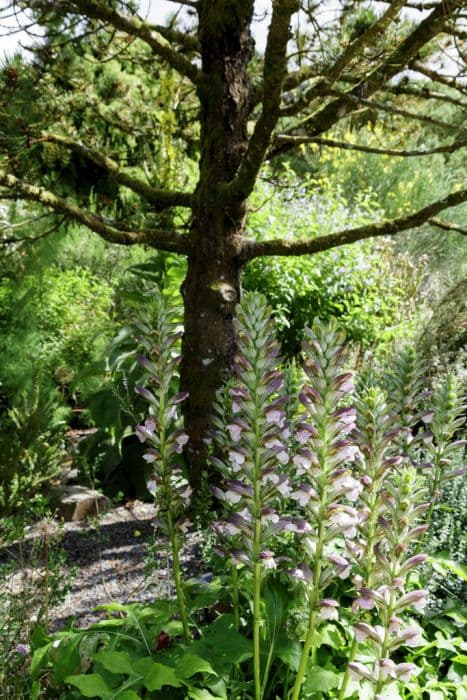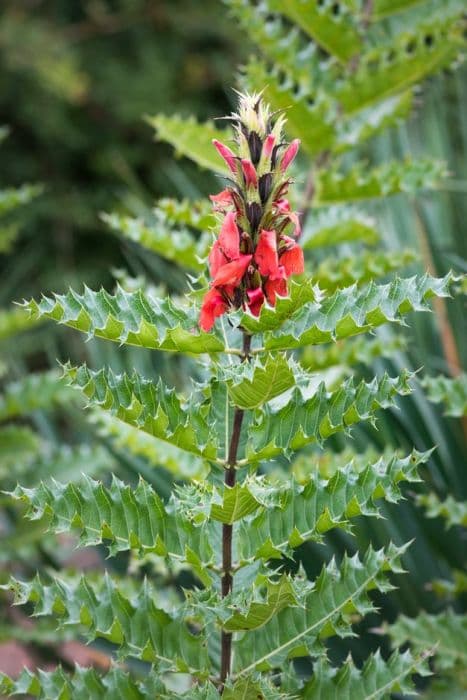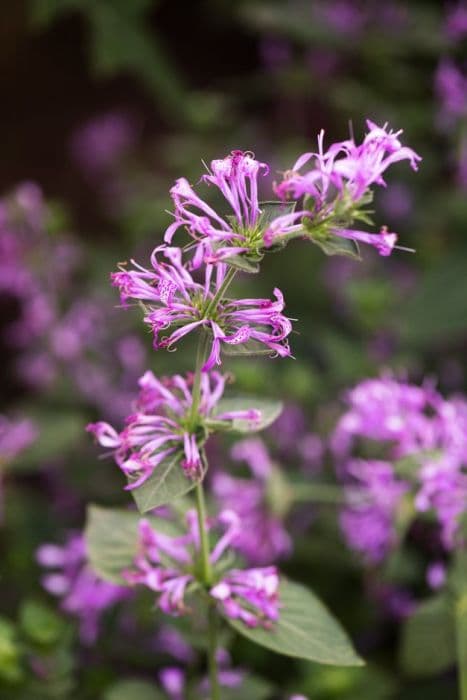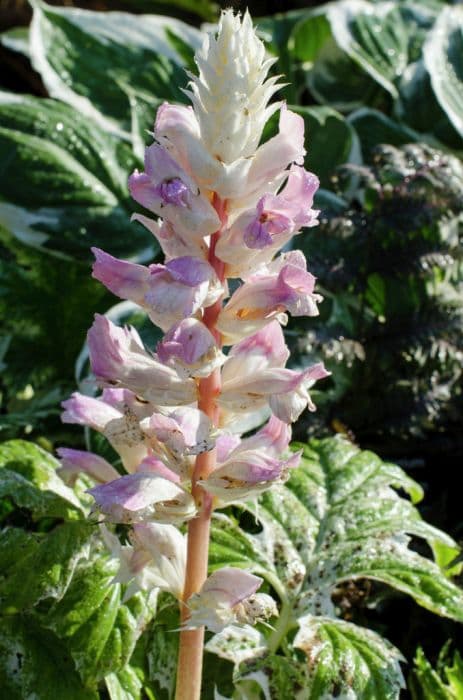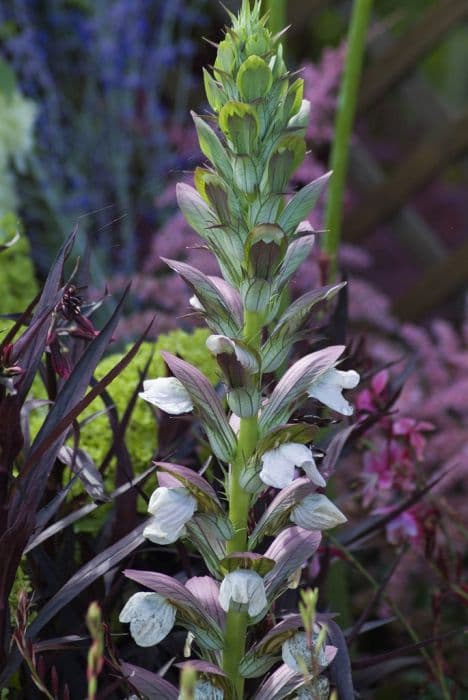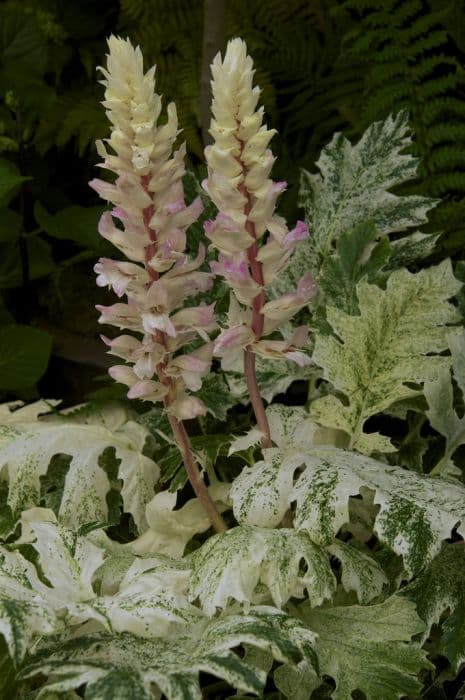Black-eyed Susan vine Thunbergia alata Sunny Susy Red-orange = 'Sumthun 02' (PBR)
![black-eyed Susan [Sunny Suzy Red-Orange]](/_next/image?url=https%3A%2F%2Fplants-admin.emdemapps.com%2Fimages%2Fplants%2F%2Fimages%2F607ea5891ee3f.jpg&w=3840&q=75)
ABOUT
The Thunbergia alata Sunny Susy Red-orange, commonly known as the Black-eyed Susan vine, boasts vibrant blossoms that captivate onlookers. Its flowers exhibit a warm palette, with petals of a striking red-orange hue surrounding a dark center that resembles an eye, hence its name. This eye-catching contrast adds to the charm of the plant, making it a popular choice for ornamental displays. Apart from its beautiful flowers, the Black-eyed Susan vine is characterized by heart-shaped leaves that are lush and green, further accentuating the vivid colors of its blooms. Its twining stems enable it to climb, often used on trellises and in hanging baskets where its floral display can cascade gracefully. The planT's overall appearance is one of cheer and exuberance, livening up any garden space or outdoor area with its bright, trumpet-shaped flowers and verdant foliage.
About this plant
 Names
NamesFamily
Acanthaceae
Synonyms
Black-Eyed Susan Vine, Clock Vine
Common names
Thunbergia alata Sunny Susy Red-orange = 'Sumthun 02' (PBR).
 Characteristics
CharacteristicsLife cycle
Annuals
Foliage type
Deciduous
Color of leaves
Green
Flower color
Red-orange
Height
6-8 feet (1.8-2.4 meters)
Spread
3-4 feet (0.9-1.2 meters)
Plant type
Climber
Hardiness zones
10
Native area
East Africa
Benefits
 General Benefits
General Benefits- Attractive Flowers: Thunbergia alata, commonly known as Black-eyed Susan vine, produces vibrant red-orange flowers that can add aesthetic beauty to any garden or landscape.
- Fast Growing: The plant is known for its rapid growth, which makes it an excellent choice for quickly covering trellises, fences, or other structures.
- Easy to Cultivate: Black-eyed Susan vine is relatively easy to grow and maintain, which makes it suitable for beginner gardeners.
- Versatility: It can be grown in containers, hanging baskets, or in the ground, allowing for flexibility in garden design and space utilization.
- Extended Blooming Season: The flowering season of Black-eyed Susan vine is long, providing color and vibrancy for much of the year in appropriate climates.
- Wildlife Attraction: The flowers of the vine can attract beneficial pollinators like bees and butterflies, promoting biodiversity in the garden.
- Screening: Black-eyed Susan vine can be used as a natural screen or privacy barrier when grown on trellises or fences.
 Medical Properties
Medical PropertiesThis plant is not used for medical purposes.
 Air-purifying Qualities
Air-purifying QualitiesThis plant is not specifically known for air purifying qualities.
 Other Uses
Other Uses- Art Installation: Black-eyed Susan vine can be trained to grow on various structures to create live art installations in public spaces or art galleries.
- Educational Tool: The plant's rapid growth can be used to teach children about plant development and climbing mechanisms in biology classes.
- Photographic Background: Hobbyist and professional photographers can use the vibrant flowers of Black-eyed Susan vine as a natural backdrop for portraits or macro photography.
- Culinary Decoration: Although not for consumption, the bright flowers can be used to decorate plates and serving trays for food presentation during special events.
- Jewelry Inspiration: The vine's distinctive flowers can inspire designs for earrings, pendants, and other pieces of botanical-themed jewelry.
- Fabric Patterns: The flower's pattern and vine structure can be used as inspiration for textile designs in fashion and home decor.
- Crafting Material: Dried vines and flowers of the Black-eyed Susan vine can be used in crafting, such as for making wreaths or other decorative items.
- Color Inspiration: Artists can use the unique red-orange color of the blooms as a palette inspiration for various forms of visual art.
- Nature-based Therapies: Presence of the plant in therapeutic settings like wellness centers can contribute to creating a serene environment for various therapies.
- Seasonal Displays: Black-eyed Susan vine can be integrated into autumn-themed displays and arrangements due to its warm-toned flowers.
Interesting Facts
 Feng Shui
Feng ShuiThe Black-eyed Susan vine is not used in Feng Shui practice.
 Zodiac Sign Compitability
Zodiac Sign CompitabilityThe Black-eyed Susan vine is not used in astrology practice.
 Plant Symbolism
Plant Symbolism- Aspiration: Commonly known as Black-Eyed Susan Vine, this plant tends to grow towards the sun, symbolizing reaching for goals and striving for personal growth.
- Encouragement: With its vibrant red-orange flowers and hearty growth, the Black-Eyed Susan Vine offers a sense of motivation and encourages positivity.
- Friendship: Often given to friends, its delightful appearance is symbolic of the cheer and joy shared in friendship.
- Optimism: Its bright blossoms can symbolize a sunny outlook and the belief that good things are on the horizon.
 Water
WaterBlack-eyed Susan vine prefers consistent moisture, so water it deeply enough to saturate the root zone, typically once a week, and more frequently during hot, dry weather. Adequate watering would be about one to two gallons per week, depending on the local climate and the plant's exposure to the sun. Reduce the amount of water during the winter months when the plant is not actively growing. Always check the soil moisture by feeling it a few inches down; if it's dry, it's time to water. Avoid overhead watering to minimize the risk of leaf diseases and make sure the plant has good drainage to prevent root rot.
 Light
LightBlack-eyed Susan vine thrives best in full sun to partial shade. It needs at least four to six hours of direct sunlight a day, but it can benefit from some shade during the hottest part of the day. An ideal spot would be one where it gets morning sunlight and light, dappled shade in the afternoon to protect it from the intense midday sun.
 Temperature
TemperatureThe ideal temperature range for Black-eyed Susan vine is between 60 and 85 degrees Fahrenheit. It can tolerate a minimum temperature down to around 50 degrees Fahrenheit but will suffer if exposed to frost. It is not frost-tolerant and should be protected or brought indoors if temperatures threaten to dip below 50 degrees Fahrenheit.
 Pruning
PruningPruning Black-eyed Susan vine encourages bushier growth and more flowers. It can be pruned throughout the growing season as needed to shape the plant or to remove any dead or damaged stems. The best time for a major prune is early spring, before the new growth starts.
 Cleaning
CleaningAs needed
 Soil
SoilBlack-eyed Susan vine thrives in well-draining soil rich in organic matter, with a pH between 6.0 and 7.5. A mixture of peat, compost, perlite, and garden soil in equal parts creates an ideal environment for its growth.
 Repotting
RepottingBlack-eyed Susan vine should be repotted every 1-2 years, or when it outgrows its current pot, to ensure adequate room for root growth and to replenish the nutrients in the soil.
 Humidity & Misting
Humidity & MistingBlack-eyed Susan vine prefers moderate to high humidity levels but is adaptable to lower humidity conditions indoors. Strive for a humidity level between 40-60% for optimal growth.
 Suitable locations
Suitable locationsIndoor
Place in bright, indirect light; keep soil moist, not wet.
Outdoor
Full to partial sun, protect from strong winds, keep well-watered.
Hardiness zone
10-11 USDA
 Life cycle
Life cycleThunbergia alata, commonly known as Black-eyed Susan vine, begins its life as a seed, which upon germination, develops into a seedling with characteristic heart-shaped leaves. As a fast-growing annual, it quickly enters the vegetative stage, where it extends its vine tendrils, aggressively climbing and spreading with the aid of its twining stems. During the flowering stage, which occurs in summer and continues into fall, it produces vibrant red-orange flowers with a dark center resembling an eye, hence the common name. After pollination, often facilitated by bees and other insects, the plant sets seeds within small capsules. Following seed set, as an annual plant, it completes its life cycle by senescing and dying off with the onset of cold weather or after setting seed. The seeds can then overwinter and germinate the next spring to start a new cycle, or they may be collected and sown by gardeners to propagate new plants.
 Propogation
PropogationPropogation time
Spring-Early Summer
The Black-eyed Susan vine, specifically the Thunbergia alata Sunny Susy Red-orange 'Sumthun02' (PBR), is commonly propagated through the method of seed sowing. The ideal time for sowing these seeds is late winter to spring, ensuring that the danger of frost has passed when planting outdoors. The process involves filling a seed tray or pots with a seed-starting mix, gently pressing the seeds into the soil, and covering them lightly with more mix. The seeds typically require a warm environment; placing the tray or pots in a propagator or covering with plastic can maintain the necessary warmth and humidity. Seedlings usually emerge in 10 to 14 days when kept at a temperature within the range of 70 to 75 degrees Fahrenheit (21 to 24 degrees Celsius). Once seedlings are large enough to handle, they can be transplanted into individual pots and allowed to grow stronger before being moved to their final location outdoors.
